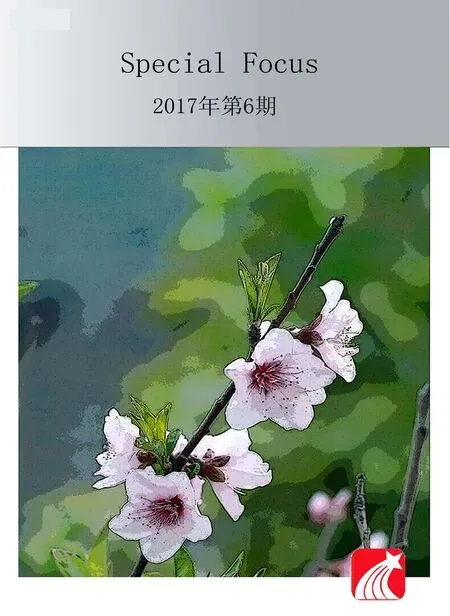Happiness & 福
By Wang Xiaoke
Happiness & 福
By Wang Xiaoke
What is happiness?
The answer to this question may vary depending on whom you asks. As happiness is one of the few things that is forever attractive, we have known dozens of recipes for it. One popular recipe is: Two cups of love (which generally involves a lovely spouse), a spoonful of a sense of accomplishment, goodness and righteousness to taste, and a pretty penny, and then you can mix them into the Pot of Health and Long Life.
The structure of the Chinese character 福 (fú), representing happiness or good fortune, means much in Chinese. The left part of 福 is a variant of 示 (shì), which indicates the original form of 神(god, or deity) according to Shuowenjiezi, the first Chinese Dictionary. The right part is 畐 (fú), on the top of which is a numeral “one” (一, yī), in the middle is a “mouth” (口 , kǒu),which in Chinese language stands for a person, and at the bottom is “ricelands” or“field” (田, tián). In ancient Chinese people’s eyes, a person’s happiness is based on a mixture of God’s blessings and earthly material abundance.
Many scholars assume that the character 福 was coined in 16th century BC (the Shang Dynasty). Many tales and legends have centered around it since then. One tale begins when Jiang Ziya (the Sage) named his wife (a notorious shrew in Chinese folklore) the Goddess of Poverty, (also called the Lady of Broom) in his Taoist Pantheon. As the name implies, the goddess goes where poverty runs rampant. Luckily enough, she is frightened to enter households when she sees the characters 福 pasted on the door. This is why Chinese people paste 福 on the doors of their houses to refuse the unwelcome demon. Later, the characters are commonly pasted on doors, windows, and walls of Chinese families. This has evolved into an art form of paper-cutting and is a traditional Chinese custom lasting to this day.
On December 24th of the Chinese lunar calendar, people of each household are likely to write 福 in different artistic styles with brush pens to celebrate the upcoming Spring Festival. The renowned calligraphers of Chinese history have left us a myriad of scrolls of calligraphy related to the word “福,”among which the most famous one was written by Emperor Kangxi during the Qing Dynasty. Kangxi’s calligraphic 福 was said to be “the best calligraphy of China.” It incorporated the shapes of four other Chinese characters, respectively, son (子 , zǐ), talent (才, cái), Farmland (田, tián), and longevity (壽 , shòu). Miraculously, a calligraphic 福entails the meaning of outstanding descendants, good talents, fertile fields, and longevity. In a sense, it also embodies all the best blessings an ancient Chinese would wish to have.
Nowadays, the character “福 ” is still one of the most commonly used characters in ceremonial celebrations.

